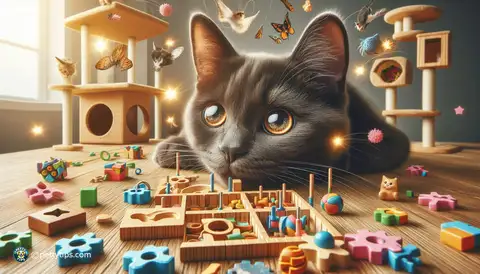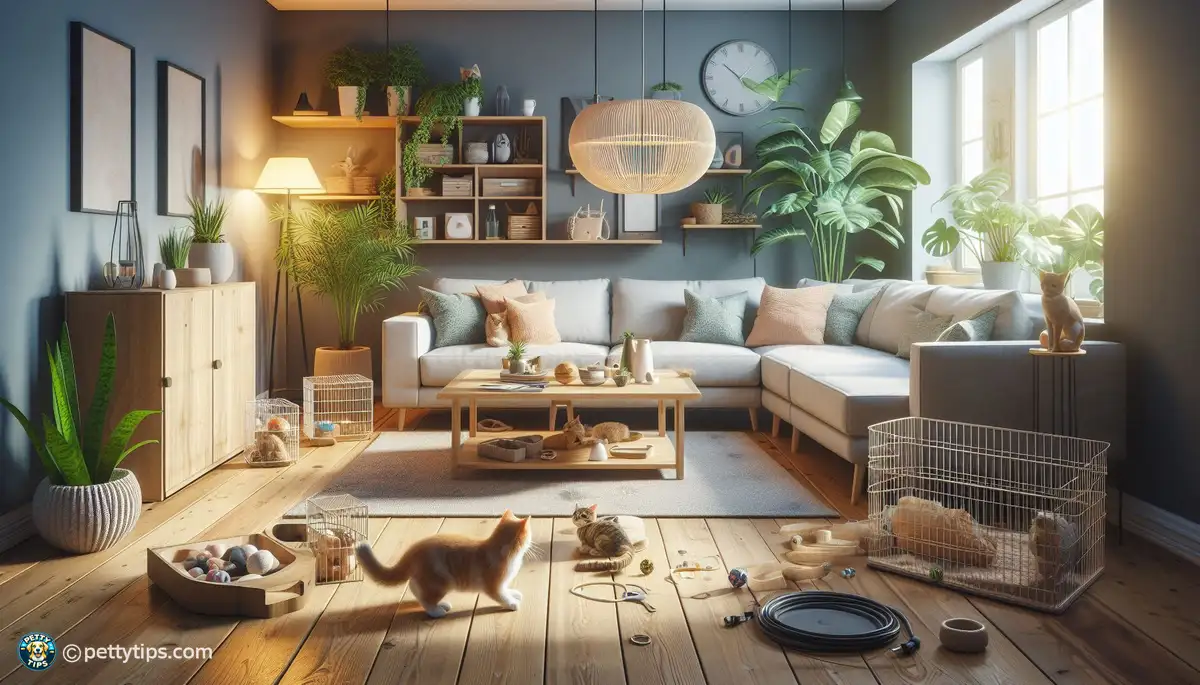
The Importance of Mental Stimulation for Pets
Penelope Roberts - Sep 20, 2024 - 6 min read


As pet owners, our homes are not just living spaces for us but also playgrounds for our furry companions. Just like with children, it's crucial to ensure that our pets can explore safely without encountering any hazards. From electrical cords to toxic plants, there are various dangers lurking in our homes that we might not even be aware of. By pet-proofing our living spaces, we can prevent accidents and keep our beloved pets out of harm's way.
An unsecured home can pose numerous risks to our pets, ranging from minor mishaps to life-threatening emergencies. Curious by nature, pets often investigate their surroundings with boundless energy, which can lead them straight into trouble. From chewing on electrical wires to ingesting harmful substances, the possibilities for accidents are endless. As responsible pet owners, it's our duty to identify potential hazards and take proactive measures to eliminate them.
Before we can effectively pet-proof our homes, it's essential to understand our pet's behavior. Each animal has its unique personality and tendencies, which can influence the types of hazards they're prone to encountering. For example, some dogs have a penchant for chewing on objects, while others might be more inclined to climb onto high surfaces. By observing our pets closely, we can gain insights into their behaviors and anticipate potential dangers accordingly.
From the kitchen to the living room, every area of our homes presents its own set of hazards for pets. In the kitchen, sharp utensils and toxic foods pose a significant threat, while in the living room, dangling cords and delicate decorations can be tempting targets. Other common hazards include household cleaners, open windows, and unsecured trash cans. By familiarizing ourselves with these potential dangers, we can take proactive steps to mitigate risks and create a safer environment for our pets.
One of the most effective ways to pet-proof your home is by containing your pet in safe areas when unsupervised. This can be achieved through the use of baby gates, pet crates, or designated pet-friendly rooms. By limiting your pet's access to potentially hazardous areas, you can reduce the likelihood of accidents and keep them out of harm's way.
Cabinets and drawers pose a significant risk to pets, as they often contain household cleaners, medications, and other toxic substances. To prevent your pet from accessing these dangerous items, it's essential to secure cabinets and drawers with childproof locks or latches. Additionally, be sure to store any hazardous materials out of reach or in locked cabinets to further minimize the risk of exposure.
If you have an outdoor space where your pet likes to roam, it's crucial to establish boundaries to keep them safe. This can be achieved through the use of fencing or pet containment systems. Make sure the fencing is secure and free from any gaps or openings that your pet could squeeze through. Additionally, be mindful of any potential escape routes, such as under gates or over low walls.
Before allowing your pet to explore the outdoor space, take the time to remove any toxic plants or chemicals that could pose a threat. Many common garden plants, such as lilies and azaleas, are toxic to pets if ingested. Likewise, pesticides, fertilizers, and herbicides can also be harmful if consumed. Opt for pet-safe alternatives and always supervise your pet when they're outside to prevent accidental ingestion.
Training is an essential aspect of pet ownership and can help prevent accidents by teaching your pet to obey basic commands. Start with simple commands such as "sit," "stay," and "come" and gradually build upon them as your pet progresses. Consistency is key when it comes to training, so be patient and persistent with your efforts.
Even with the most well-trained pet, supervision is still necessary to ensure their safety. Keep an eye on your pet at all times, especially in unfamiliar environments or when introducing them to new stimuli. By monitoring their activities closely, you can intervene quickly if they encounter any potential hazards and prevent accidents from occurring.
To maintain a safe environment for your pet, it's essential to conduct regular inspections of your home for potential hazards. Check for loose wires, frayed cables, and other electrical hazards that could pose a risk to your pet. Inspect furniture for any sharp edges or unstable structures that could cause injury, and be sure to secure any loose items that could be knocked over or ingested.
Regular cleaning is also important for pet-proofing your home and preventing accidents. Keep your home free from clutter and debris that could pose a tripping hazard to your pet. Additionally, be diligent about cleaning up any pet accidents promptly to prevent the spread of bacteria and odors. By maintaining a clean and tidy living space, you can create a safer environment for both you and your furry friend.
Pet-proofing your home is essential for ensuring your furry friend's safety and well-being. By understanding the potential hazards and taking proactive measures to mitigate risks, you can create a secure environment where your pet can explore and play freely. Remember, the safety of your pet is in your hands, so take the necessary steps to pet-proof your home today.